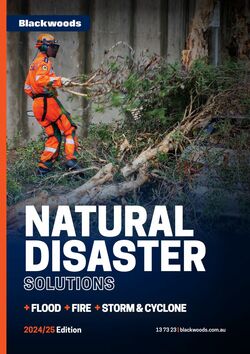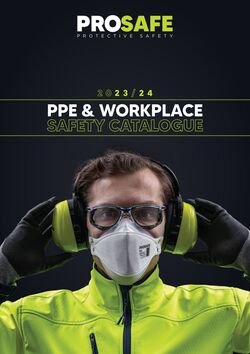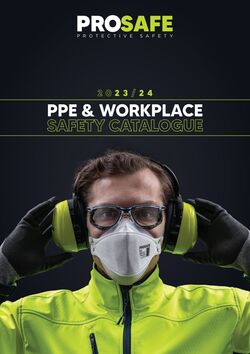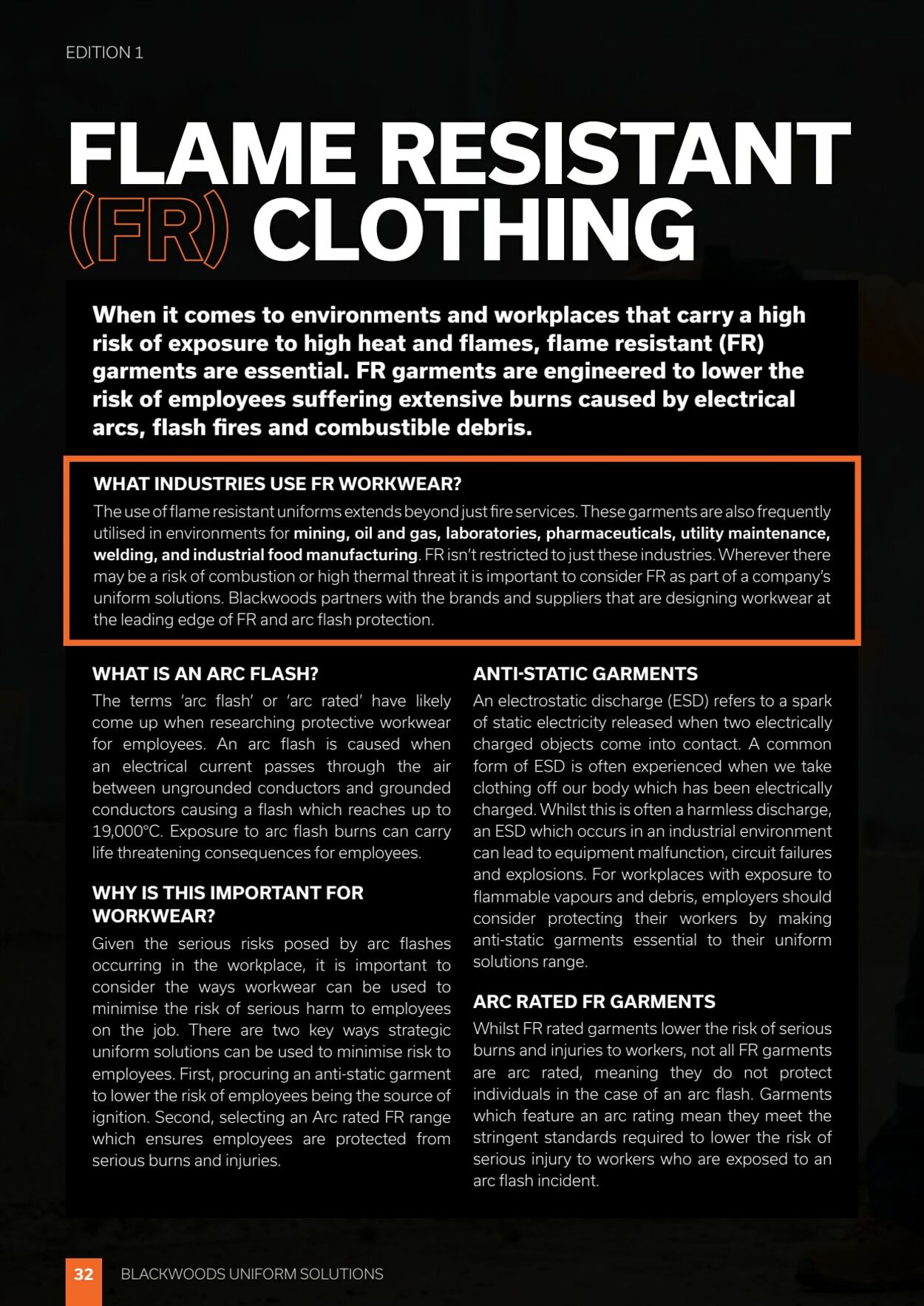













Products in this catalogue
EDITION 1 FLAME RESISTANT ~~) CLOTHING Um me ROME Mua det (e atl me lee Mille] risk of exposure to high heat and flames, flame resistant (FR) era eee Me Me eee tere mom Td risk of employees suffering extensive burns caused by electrical arcs, flash fires and combustible debris. WHAT INDUSTRIES USE FR WORKWEAR? The use of flame resistant uniforms extends beyond just fire services. These garments are also frequently utilised in environments for mining, oil and gas, laboratories, pharmaceuticals, utility maintenance, welding, and industrial food manufacturing. FR isn't restricted to just these industries. Wherever there may be a risk of combustion or high thermal threat it is important to consider FR as part of acompany's uniform solutions. Blackwoods partners with the brands and suppliers that are designing workwear at the leading edge of FR and arc flash protection WHAT IS AN ARC FLASH? The terms ‘arc flash’ or ‘arc rated’ have likely come up when researching protective workwear for employees. An arc flash is caused when an electrical current passes through the air between ungrounded conductors and grounded conductors causing a flash which reaches up to 19,000°C. Exposure to arc flash burns can carry life threatening consequences for employees. WHY IS THIS IMPORTANT FOR WORKWEAR? Given the serious risks posed by arc flashes occurring in the workplace, it is important to consider the ways workwear can be used to minimise the risk of serious harm to employees on the job. There are two key ways strategic uniform solutions can be used to minimise risk to employees. First, procuring an anti-static garment to lower the risk of employees being the source of ignition. Second, selecting an Arc rated FR range which ensures employees are protected from Ta(el Hole lea oe lale May (OL = BLACKWOODS UNIFORM SOLUTIONS PNB ar Ua eacr VU By An electrostatic discharge (ESD) refers to a spark of static electricity released when two electrically charged objects come into contact. A common form of ESD is often experienced when we take clothing off our body which has been electrically charged. Whilst this is often a harmless discharge, an ESD which occurs in an industrial environment can lead to equipment malfunction, circuit failures and explosions. For workplaces with exposure to flammable vapours and debris, employers should consider protecting their workers by making anti-static garments essential to their uniform rol Wittolaar-lare ls ARC RATED FR GARMENTS Whilst FR rated garments lower the risk of serious burns and injuries to workers, not all FR garments are arc rated, meaning they do not protect individuals in the case of an arc flash. Garments which feature an arc rating mean they meet the stringent standards required to lower the risk of serious injury to workers who are exposed to an arc flash incident
| Name | Details |
|---|